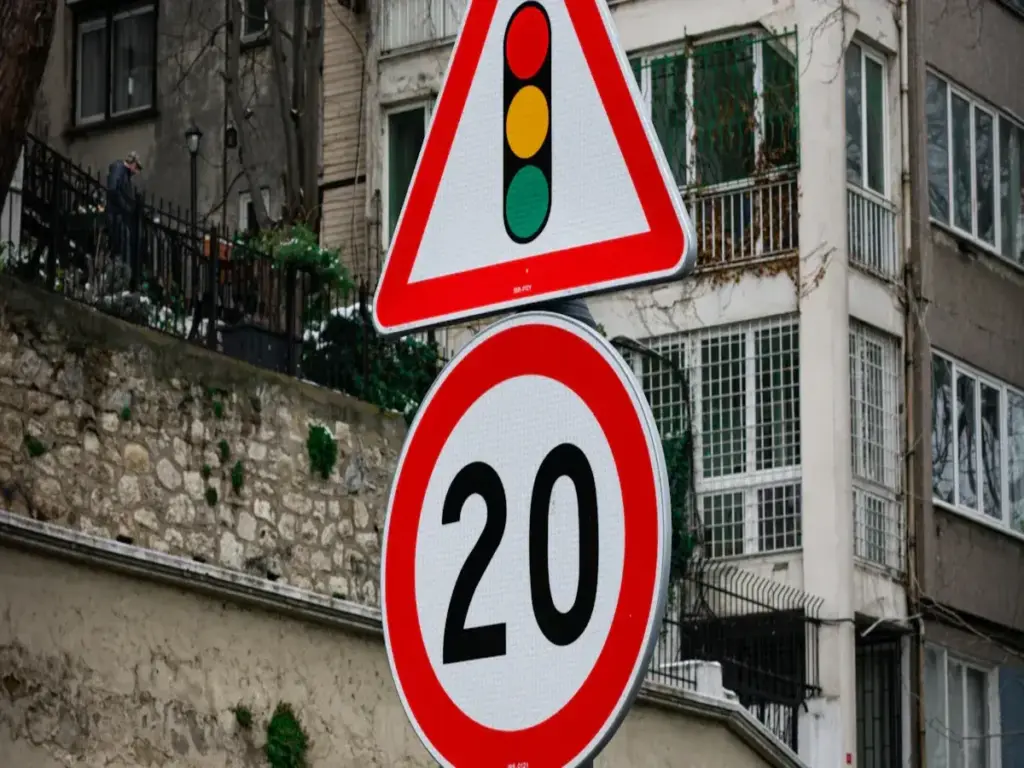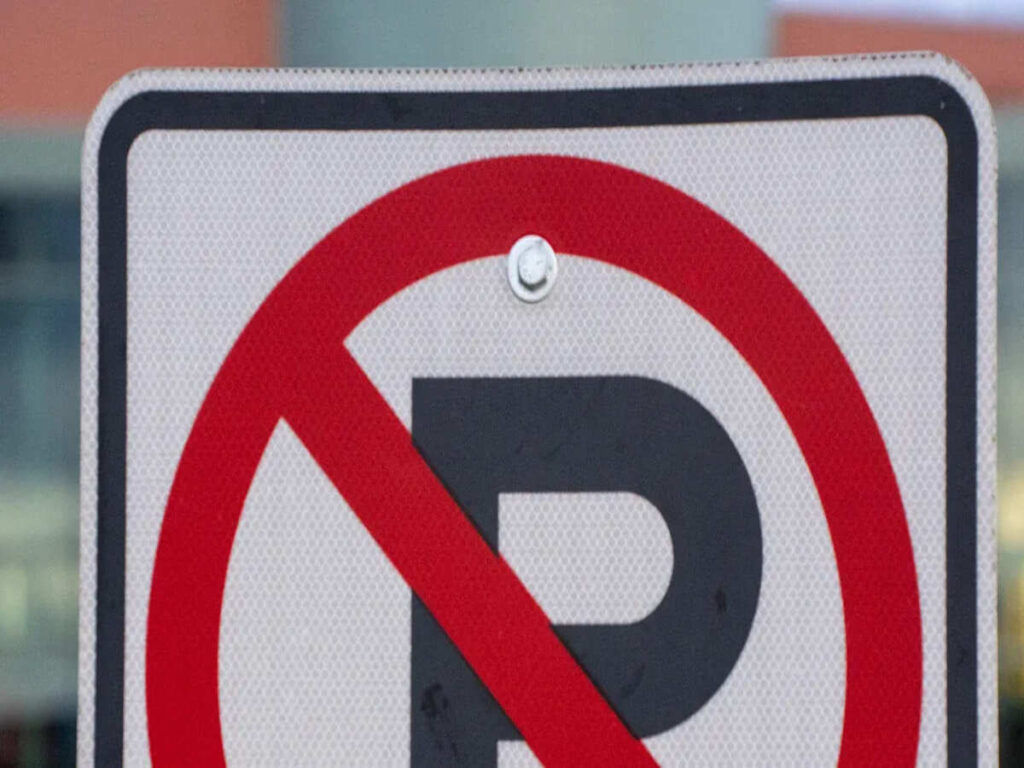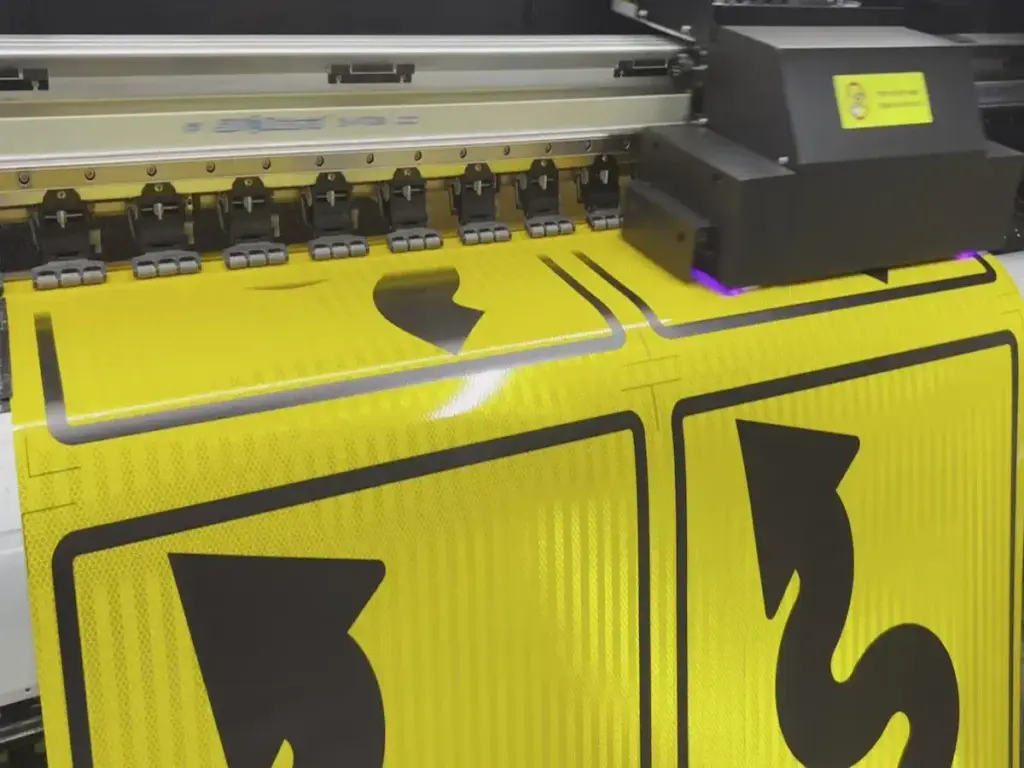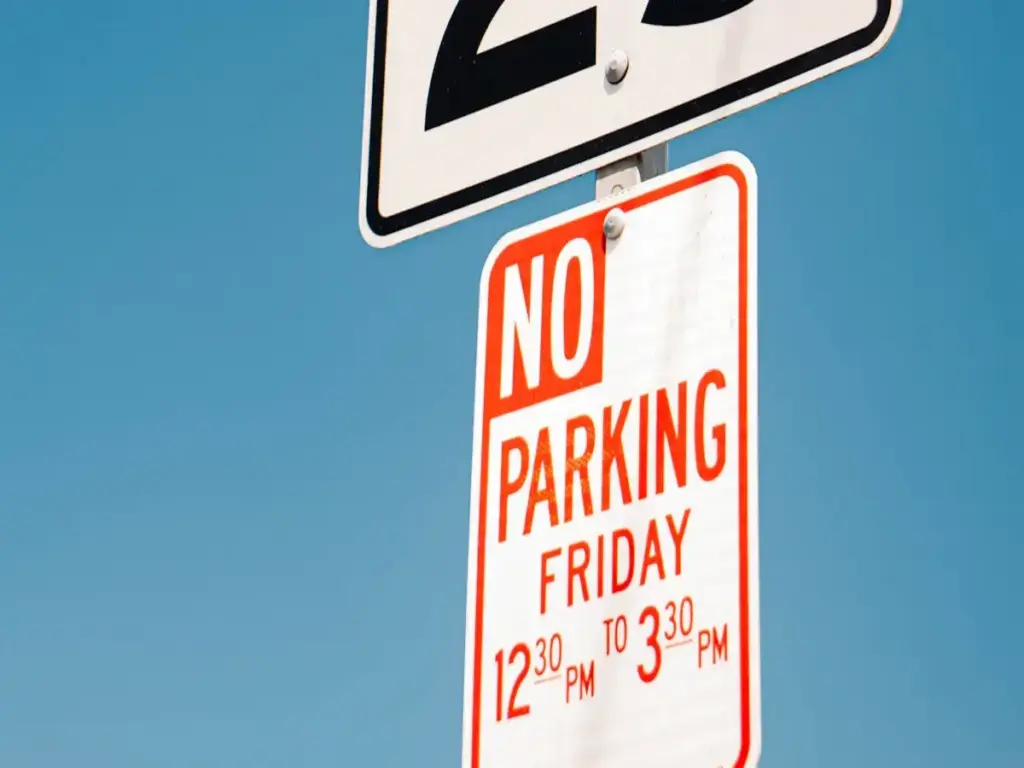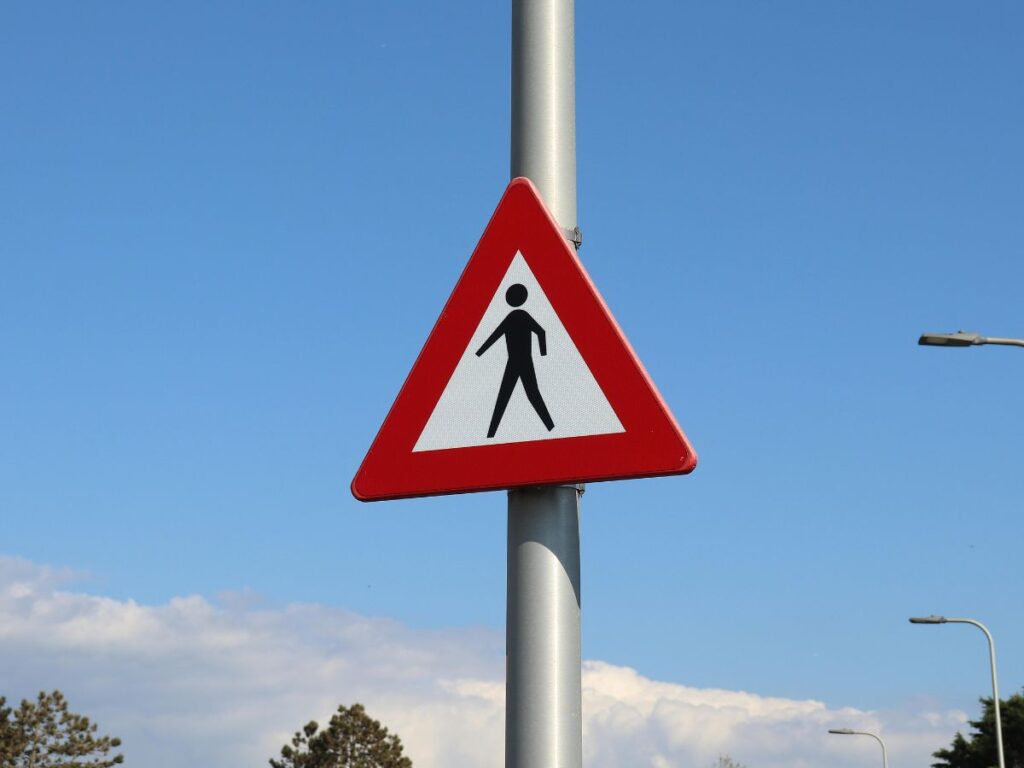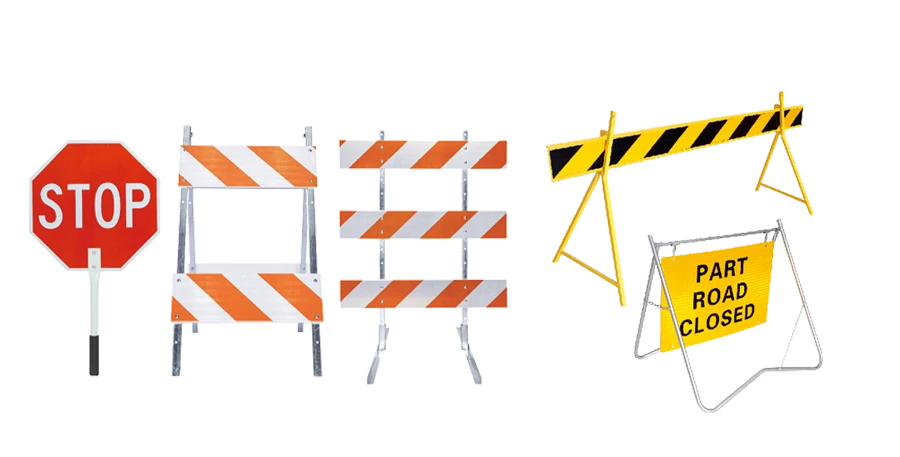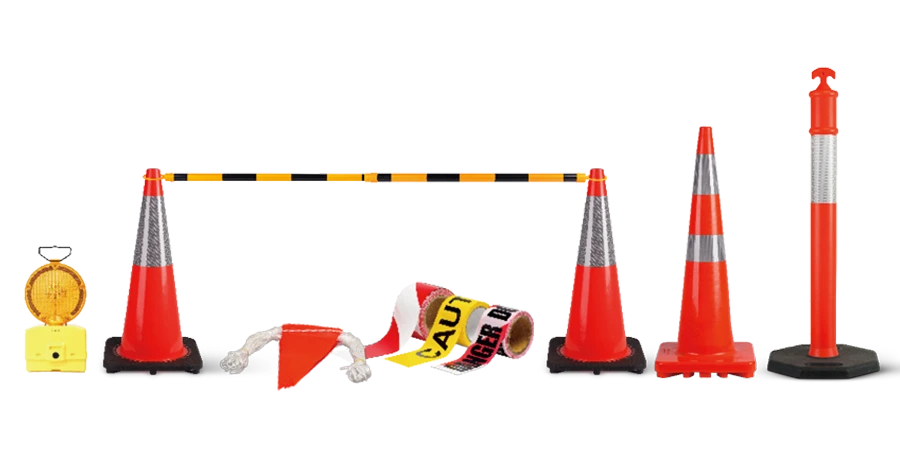
Вы видите дистанционные таблички на оживленных перекрестках каждый день., но вы можете не знать, насколько они помогают вам оставаться в безопасности. Эти таблички работают со знаками «Стоп» и «Уступи дорогу».. Они говорят вам, как далеко вы должны остановиться или позволить другим пройти. Правильное их использование обеспечит безопасность всех и поможет вам соблюдать правила.. Знание того, как работают эти знаки, также поможет вам подготовиться к экзамену по теории вождения.. Это позволяет чувствовать себя более уверенно на дороге..
В Optraffic, мы предоставляем широкий спектр знаки безопасности дорожного движения, включая дистанционные пластины, разработан, чтобы помочь вам соблюдать правила безопасности дорожного движения. Наши дорожные знаки обеспечивают четкую связь для водителей., повышение безопасности на оживленных перекрестках и за их пределами. Ознакомьтесь с нашей подборкой надежных дорожных знаков, которые повысят безопасность и уверенность на дороге..
Ключевые выводы
- Дистанционные таблички сообщают вам, на каком расстоянии впереди следует остановиться или уступить дорогу.. Они предупреждают вас заранее, чтобы ты мог безопасно замедлиться. Это поможет вам не остановиться внезапно.
- Поместите дистанционные таблички прямо под знаками «Стоп или уступи дорогу».. Используйте правильный размер и место для дороги и скорости.. Это гарантирует, что водители смогут их четко видеть..
- Держите дистанционные таблички в чистоте и всегда на виду.. Убедитесь, что их ничто не блокирует, как деревья или припаркованные машины. Это помогает водителям быстро реагировать, Даже в плохую погоду или ночью.
- Соблюдайте закон при установке дистанционных табличек.. Используйте правильные измерения и поместите их в правильное место.. Благодаря этому дорожные знаки будут четкими и безопасными для всех..
- Правильное использование дистанционных знаков делает дороги безопаснее. Это снижает вероятность несчастных случаев и помогает подготовиться к экзамену по теории вождения..
Что такое дистанционные пластины?
Определение и цель
Вы часто будете замечать дистанционные таблички под знаками «Стоп» или «Уступить дорогу» на перекрестках.. Эти таблички показывают, насколько далеко впереди вам следует остановиться или уступить дорогу.. Например, тарелка могла бы сказать “ОСТАНАВЛИВАТЬСЯ 100 ярды”. Это расскажет вам, что происходит на дороге. Вы получите четкие указания еще до того, как доберетесь до остановки или линии уступки дороги.. Это раннее предупреждение полезно, если вы плохо видите перекресток или дорога изгибается..
Дистанционные таблички помогают дорожным знакам работать лучше. Они дают вам больше времени, чтобы среагировать и безопасно замедлиться.. Вы можете избежать внезапной остановки, что может вызвать сбои. Вы также помогаете трафику двигаться лучше. При использовании информации на дистанционных табличках, ты делаешь перекресток безопаснее для всех.
Кончик: Всегда проверяйте наличие дистанционных табличек, когда вы приближаетесь к оживленному или скрытому перекрестку.. Они помогут вам спланировать, что делать, прежде чем вы доберетесь туда..
Ключевые функции
Дистанционные таблички имеют некоторые особенности, которые делают их простыми в использовании и легко читаемыми.:
- Четкая маркировка расстояний: Расстояние отображается в ярдах или метрах.. Это говорит вам, как далеко находится линия остановки или уступки дороги..
- Стандартизированный дизайн: Пластины используют большие, Смелые буквы. Вы можете прочитать их быстро, даже во время вождения.
- Прочные материалы: Современные дистанционные пластины изготавливаются из прочного металла.. Новые пластины изготавливаются с помощью плазменной резки на станке с ЧПУ., чтобы края были гладкими и знаки были точными. Эти методы помогают пластинам прослужить дольше и противостоять непогоде..
- Простая установка: Новые способы установки пластин помогают работникам безопасно и правильно устанавливать их.. Автоматизация и более совершенные инструменты помогают разместить пластины на нужной высоте и под нужным углом..
На многих дорогах вы увидите дистанционные таблички., от оживленных городских улиц до тихих проселочных переулков. Они работают с другими дорожными знаками, чтобы предоставить вам информацию, необходимую для безопасного вождения..
Как использовать дистанционные таблички со знаками «Стоп» и «Уступи дорогу»
Когда использовать
Вам необходимо знать, когда необходимы дистанционные таблички со знаками остановки и уступки дороги.. Вы часто будете использовать их на перекрестках, где вы не можете четко видеть стоп-линию или линию уступа дороги.. Например, если поворот или холм закрывают вам обзор, вам следует поискать дистанционную пластину. Эти таблички предупреждают вас заранее, чтобы у вас было время замедлиться и безопасно остановиться.
Вы также найдете дистанционные пластины на сложных перекрестках.. Если пересекаются несколько дорог или движение транспорта движется быстро, вам нужно дополнительное предупреждение. Знаки «Стоп» и «Уступи дорогу» с дистанционными табличками помогут вам подготовиться к предстоящим событиям.. В сельских районах, вы часто путешествуете на более высоких скоростях. Вам нужно больше времени, чтобы отреагировать, поэтому дистанционные пластины становятся еще более важными.
В городах, вы видите дистанционные таблички там, где здания или припаркованные машины закрывают вам обзор. На сельских дорогах, вы видите их перед крутыми поворотами или на вершине холма. Всегда проверяйте наличие этих табличек, когда приближаетесь к перекрестку.. Они помогают вам соблюдать правила и обеспечивать безопасность всех..
Примечание: Местные правила могут требовать установки дистанционных табличек на определенных перекрестках.. Всегда соблюдайте правила, установленные местными властями..
Размещение и позиционирование
Вы должны разместить дистанционные пластины в правильном месте, чтобы они работали хорошо.. Табличка должна располагаться чуть ниже знака остановки или знака уступки дороги.. Сюда, ты видишь оба знака вместе и понимаешь, что делать.
Расстояние на табличке показывает, насколько далеко впереди находится линия остановки или уступа дороги.. Например, если на табличке написано “ОСТАНАВЛИВАТЬСЯ 100 ярды”, ты знаешь, что должен остановиться 100 ярдов впереди. Всегда следует тщательно измерять это расстояние.. Если вы разместите пластину слишком близко или слишком далеко от стыка, Водители могут запутаться.
Городские и сельские дороги требуют разных подходов. В городах, вы часто используете номера меньшего размера, потому что движение транспорта движется медленнее, а знаки расположены ближе друг к другу.. На сельских дорогах, вам нужны большие тарелки и большие буквы. Это поможет вам увидеть знак на расстоянии, когда вы едете быстрее..
Вот таблица, показывающая основные различия между городскими и сельскими условиями.:
| Аспект | Городские условия | Сельская обстановка / Высокоскоростные дороги |
|---|---|---|
| Размер букв для указателей | Минимум 4 дюймы для заглавных букв (≤25 миль в час) | Минимум 6 дюймы для заглавных букв (более высокие скорости) |
| Размер букв для табличек с названиями улиц | Минимум начальные заглавные буквы 4 дюймы, строчные буквы 3 дюймы (≤25 миль в час) | Минимум начальные заглавные буквы 6 дюймы, строчные буквы 4.5 дюймы; большие размеры для >40 миль в час |
| Знак размещение | Установлен на всех перекрестках улиц.; расположены недалеко от муниципальных границ или на окраинах застроенных территорий | Размещено за пределами муниципальных границ; опущены вблизи перекрывающихся маршрутов; размещено примерно в 300 футах за пределами разделения маршрутов |
| Обоснование заявки | Знаки используются там, где это оправдано техническими решениями и исследованиями дорожного движения. | Такой же, но с учетом разного трафика и геометрических условий |
Прежде чем устанавливать дистанционную табличку, всегда следует проверять тип дороги и ограничение скорости.. Это поможет вам выбрать правильный размер и положение знака..
Видимость и разборчивость
Вы должны убедиться, что дистанционные таблички легко видны и читаются.. Хорошая видимость помогает вовремя среагировать на знаки остановки и уступить дорогу.. Поместите тарелку туда, где ее ничто не загораживает., такие как деревья, Припаркованные машины, или другие знаки.
Освещение и погода могут повлиять на то, насколько хорошо вы видите дистанционные таблички.. Ночью или при слабом освещении, вам нужны знаки со светоотражающими поверхностями. Это выделяет их в свете автомобильных фар.. В дождь, туман, или снег, становится все труднее увидеть какой-либо знак. Погода может создавать закономерности, из-за которых знаки становятся менее четкими. Вы всегда должны проверять, что ваши знаки чистые и не покрыты грязью или снегом..
В городских и сельских районах для хорошей читаемости нужны знаки разного размера.. В городах, вы можете использовать буквы меньшего размера, потому что вы едете медленнее и приближаетесь к знаку, прежде чем вам нужно будет действовать.. На сельских дорогах, вам нужны буквы большего размера, чтобы вы могли прочитать знак издалека. Это поможет вам вовремя отреагировать, даже на более высоких скоростях.
Кончик: Всегда проверяйте знаки после плохой погоды. Убедитесь, что они по-прежнему видны и легко читаются..
Теперь вы знаете, как использовать дистанционные таблички со знаками остановки и уступки дороги.. Вы можете определить, когда они необходимы, Поместите их правильно, и убедитесь, что их легко увидеть. Это поможет вам соблюдать правила и обеспечит безопасность всех на дороге..
Законодательные требования к знакам «Стоп и уступи дорогу»
Национальные стандарты
Вы должны следовать строгим правилам при установке знаков остановки и знаков уступки дороги в Великобритании.. The Правила дорожного движения и общие направления (TSRGD) и Руководство по дорожным знакам установить эти стандарты. Эти документы гарантируют, что все дорожные знаки Великобритании выглядят одинаково и хорошо работают по всей стране..
Вот несколько ключевых моментов, которые вам нужно знать:
- Разместите знаки остановки и знаки уступки дороги так, чтобы край, ближайший к главной дороге, совпадал с краем этой дороги., даже если боковая дорога встречается под углом.
- На второстепенных дорогах с двусторонним движением, линия остановки или уступа дороги должна доходить до центра дороги. Если дорога узкая, линия должна проходить по всей ширине.
- Для дорог с односторонним движением, разметка должна покрывать всю ширину дороги.
- Используйте предупреждающие линии вдоль дороги, чтобы помочь водителям увидеть, где остановиться или уступить дорогу..
- Никогда не используйте знаки «Стоп» и «Уступайте дорогу» на каждой дороге на перекрестке.. Это может сбить водителей с толку относительно того, у кого приоритет..
- На специальных участках, где дорога узкая, вы можете использовать разметку уступающего пути со знаками приоритета и дополнительными табличками, чтобы показать, кто ходит первым..
- Используйте только вертикальные знаки остановки на перекрестках или железнодорожных переездах., нет на других приоритетных площадках.
Соблюдение этих правил поможет вам сохранить дорожные знаки четкими и безопасными для всех..
Контрольный список соответствия
Прежде чем устанавливать дистанционные пластины с остановиться и уступить дорогу знакам. Используйте этот контрольный список, чтобы убедиться, что вы соответствуете всем требованиям законодательства.:
- Измерьте расстояние от знака до линии остановки или уступки дороги.. Используйте метры или ярды, как того требуют стандарты.
- Выберите правильный размер и стиль дистанционной пластины.. Убедитесь, что оно соответствует скорости и типу дороги..
- Разместите дистанционную пластину непосредственно под основным знаком.. Это помогает водителям видеть оба знака вместе..
- Для дорог с двусторонним движением, установить дистанционные таблички по обеим сторонам дороги или на центральном бронировании.
- Не используйте дистанционные таблички на перекрестках, где водители могут повернуть налево или направо на свободную полосу., если только у вас нет объездной дороги, ведущей на проезжую часть с двусторонним движением.
- Во временных зонах управления движением, используйте специальные оранжевые дистанционные таблички с черной надписью. Разместите их под предупреждающим знаком и проверьте, соответствуют ли они правилам размера..
| Шаг | Что проверить |
|---|---|
| Расстояние | Точное измерение в метрах или ярдах |
| Размещение пластины | Прямо под главным знаком, обе стороны при необходимости |
| Размер пластины | Соответствует скорости и типу дороги |
| Особые случаи | Используйте оранжевые таблички для временных зон |
Всегда следуйте рекомендациям местных властей в отношении дорожных знаков Великобритании.. Это делает ваши дорожные знаки законными и простыми для понимания..
Распространенные ошибки и лучшие практики
Ошибки, которых следует избегать
Вы можете видеть дистанционные таблички каждый день., но ошибки в их использовании могут привести к путанице или даже несчастным случаям.. Вот некоторые распространенные ошибки, на которые следует обратить внимание:
- Размещение дистанционных табличек слишком близко или слишком далеко от фактической остановки или линии уступа дороги.. Из-за этого водителям может быть сложно определить, когда следует замедлиться..
- Использование неправильного измерения расстояния. Всегда проверяйте скорость дороги и видимость, прежде чем принять решение о расстоянии..
- Игнорирование типа дороги. Городским и сельским дорогам нужны разные размеры и расположение табличек..
- Загораживание знака деревьями, Припаркованные машины, или другие объекты. Водителям нужно четкое представление, чтобы отреагировать вовремя.
- Забыв о уклонах и поворотах. Традиционные проверки расстояния видимости часто упускают из виду эти 3D-функции., что может уменьшить видимость дороги для водителя. Плохая конструкция или расчет могут ограничить время реакции и увеличить риск несчастного случая..
- Отсутствие четких указателей в зонах повышенного риска, таких как туннели.. Без этих, водители могут неправильно оценить безопасное расстояние, особенно во время резких остановок.
Кончик: Всегда дважды проверяйте свои размеры и расположение, прежде чем устанавливать какую-либо дистанционную пластину..
Советы по установке
Вы можете правильно установить дистанционные пластины, выполнив следующие действия.:
- Измерьте точное расстояние от знака до линии остановки или уступки дороги.. Для точности используйте измерительное колесо или рулетку..
- Выберите правильный размер пластины для типа дороги. Используйте пластины большего размера для сельских или высокоскоростных дорог..
- Поместите табличку прямо под главным знаком.. Убедитесь, что ничто не блокирует вид.
- Проверьте угол и высоту. Табличка должна быть обращена навстречу встречному транспорту и располагаться на уровне глаз водителей..
- Для дорог с двусторонним движением, установить плиты с двух сторон или на центральное бронирование.
- В туннелях или на крутых поворотах, добавьте дополнительные маркеры или светоотражающие материалы, чтобы помочь водителям видеть знаки..
Вы поможете всем безопасно приближаться к знакам остановки, если вы выполните следующие действия..
Рекомендации по техническому обслуживанию
Вам необходимо содержать дистанционные пластины в хорошем состоянии, чтобы они оставались эффективными.:
- Регулярно очищайте тарелки, особенно после плохой погоды. Грязь или снег могут скрыть важную информацию.
- Проверьте на предмет повреждений или выцветания. Замените пластины, если надпись плохо читается..
- Обрежьте все растения и деревья, закрывающие вид на знак..
- Проверяйте знаки после дорожных работ или изменений в транспортном потоке.. Переместите или отрегулируйте их при необходимости.
- Используйте светоотражающие материалы для лучшей видимости ночью или в туннелях..
Регулярные проверки и очистка помогают водителям видеть и понимать знаки., снижение риска несчастных случаев.
Влияние на безопасность дорожного движения и тест по теории вождения
Повышенная осведомленность водителя
Вы получаете больше времени на реакцию, когда видите дистанционные таблички перед знаками остановки или уступки дороги.. Эти таблички расскажут вам, что происходит на дороге.. Вы можете замедлиться заранее и подготовиться к остановке или уступлению дороги.. Это дополнительное предупреждение поможет вам избежать резких движений.. Вы чувствуете себя более уверенно, потому что знаете, чего ожидать. Водители, которые замечают дистанционные знаки, часто делают более безопасный выбор на перекрестках.. Вы также помогаете другим участникам дорожного движения, правильно следуя знакам..
Кончик: Всегда ищите дистанционные пластины, особенно в местах, где стык не виден четко.
Сокращение несчастных случаев
Вы помогаете снизить количество несчастных случаев, если правильно используете дистанционные таблички.. Исследования показывают, что четкие знаки и ранние предупреждения снижают количество аварий на оживленных или скрытых перекрестках.. Например, Исследование Министерства транспорта показало, что установка дистанционных табличек на знаки остановки на сельских перекрестках снижает количество аварий до 30%. Вы даете себе и другим больше времени на реакцию, что означает меньшее количество внезапных остановок и меньший риск наезда сзади.. Правильное использование дистанционных табличек повышает безопасность на дороге..
Актуальность для экзамена по теории вождения
Вам необходимо знать дистанционные таблички для экзамена по теории вождения.. В тесте часто встречаются вопросы о дорожных знаках и их значении.. Если вы знаете, как работают дистанционные пластины, вы можете с уверенностью ответить на эти вопросы. Вы также научитесь распознавать эти знаки и реагировать на них в реальной жизни.. Эти знания помогут вам сдать экзамен по теории вождения и сделают вас более безопасным водителем.. Вы показываете экзаменаторам, что понимаете правила и можете использовать их на дороге..
Помнить, изучение дистанционных пластин – это не только проверка. Это помогает вам каждый раз, когда вы едете.
Вы играете ключевую роль в безопасности дорожного движения, если правильно используете дистанционные таблички со знаками остановки и уступки дороги.. Поместите каждую тарелку в нужное место, следовать правовым нормам, и часто проверяйте свои знаки. Регулярная чистка и осмотр делают каждый знак четким и легко читаемым..
Знание этих правил принесет пользу как профессионалам в области дорожного движения, так и водителям-ученикам.. Следуя передовому опыту, вы помогаете создавать более безопасные дороги для всех..
Часто задаваемые вопросы
Каково основное назначение дистанционной пластины?
Вы используете дистанционную табличку, чтобы знать, насколько далеко впереди вам следует остановиться или уступить дорогу.. Табличка дает вам раннее предупреждение, чтобы вы могли замедлиться и безопасно подготовиться к перекрестку.
Где искать дистанционные пластины?
Вы найдете дистанционные таблички чуть ниже знаков «Стоп или уступи дорогу».. Ищите их на оживленных перекрестках., резкие повороты, или места, где вы не можете ясно видеть дорогу впереди.
Используют ли дистанционные таблички метры или ярды??
На табличках для измерения расстояния вы можете увидеть метры или ярды.. Выбор зависит от местных правил и типа дороги.. Всегда внимательно читайте табличку, чтобы знать правильное расстояние..
Как сделать так, чтобы дистанционные таблички были видимыми??
Чаще мойте тарелки. Обрезайте растения или деревья, закрывающие обзор. Проверьте на наличие грязи, снег, или повреждение после плохой погоды. Быстро заменяйте выцветшие или сломанные таблички, чтобы их было легко читать..

